
-
Flow Motion v2.02 Low Light Comparison
Download link to latest version:
Flow Motion v2 maintains its finest quantization quality even in dim lighting situations. These frame grabs taken from a smooth panning shot compare FM2's performance in 1080p25 HBR, 1080p 24H, and 1080p30 MJPEG HD modes. These videos were shot two-stops underexposed, illuminated by a pair of 75W incandescent bulbs. The video gain of each frame was boosted by 50% in Adobe After Effects CS5.5, and the frame grabs were cropped at 200% resolution.
Flow Motion v2 1080p 24H mode, 200% crop:
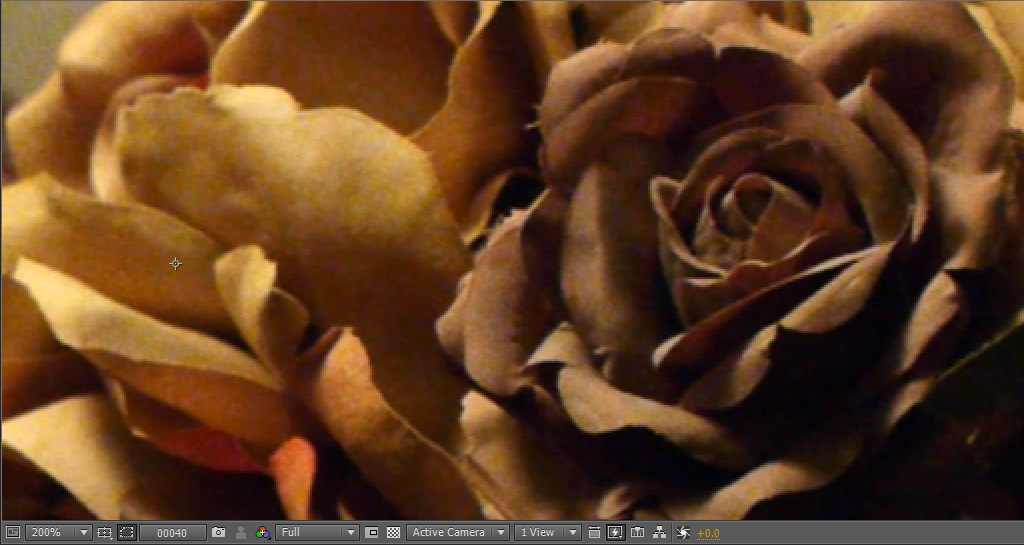
Flow Motion v2 1080p25 HBR mode, 200% crop:
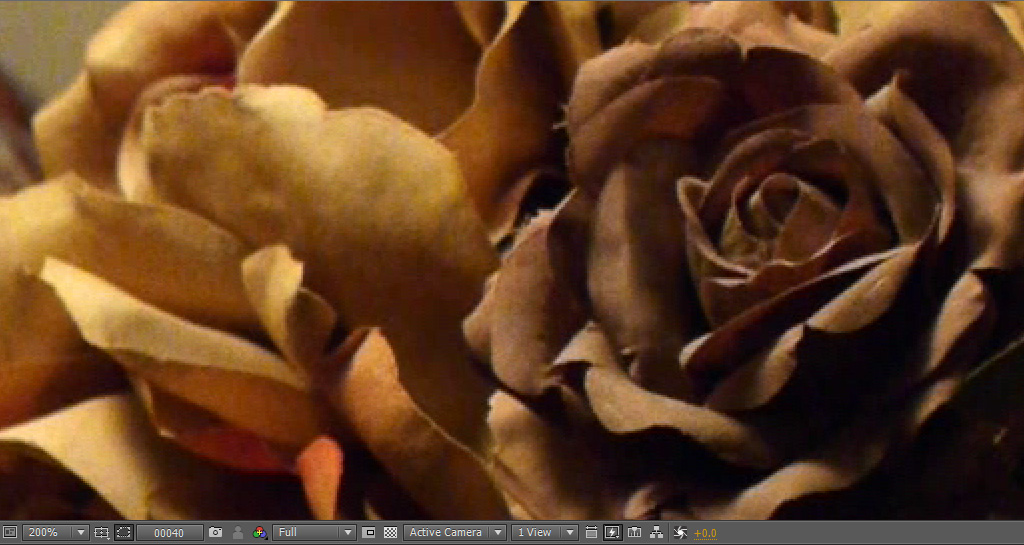
Flow Motion v2 1080p30 MJPEG HD mode, 200% crop:
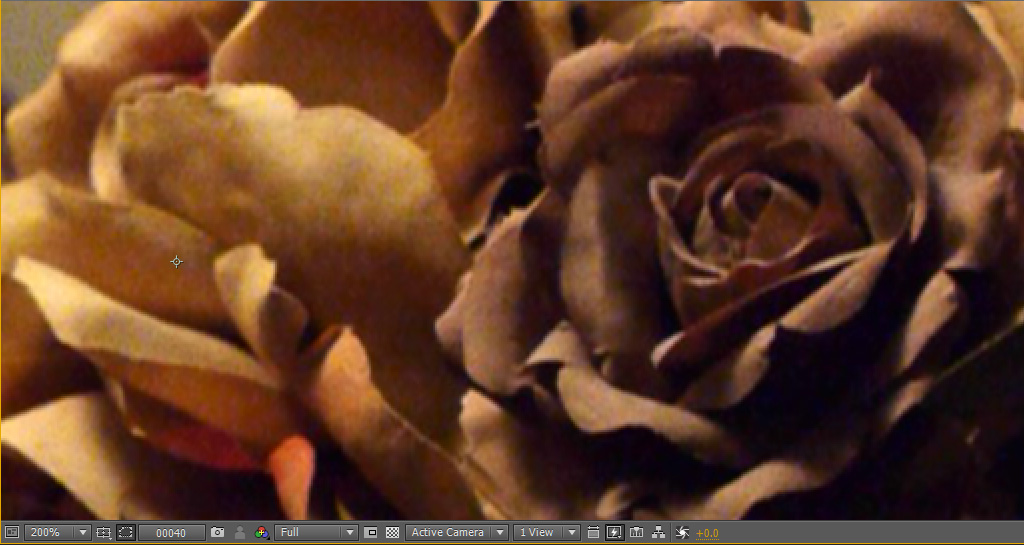
EDIT: Thanks to @crunchy, I discovered a footage interpretation error that caused spurious interlace artifacts to appear in the original HBR screen grab I posted above. I've replaced that with a corrected version, which displays HBR image quality virtually indistinguishable from the 24H frame grab.

 Low Light FM2 24H 2X.JPG1024 x 545 - 185K
Low Light FM2 24H 2X.JPG1024 x 545 - 185K
 Low Light FM2 HBR 2X.JPG1024 x 545 - 185K
Low Light FM2 HBR 2X.JPG1024 x 545 - 185K
 Low Light FM2 HD 2X.JPG1024 x 545 - 174K
Low Light FM2 HD 2X.JPG1024 x 545 - 174K
 Low Light FM2 HBR 2X.JPG1024 x 545 - 207K
Low Light FM2 HBR 2X.JPG1024 x 545 - 207K -
Here are links to the original Flow Motion v2 low light video files previewed in the previous post. Unfortunately , Vimeo balked on compressing the HBR version into its online streaming format, but the original HBR video is available for download from the Vimeo link.
Flow Motion v2 1080p 24H mode
Flow Motion v2 1080p25 HBR mode
- Download link: vimeo.com/43353433/download?t=1338757200&v=101354523&s=755c93b6e6ca720a1688fc3b17521719
Flow Motion v2 1080p30 MJPEG HD mode
-
Hmm, I was able to download the video from that Vimeo HBR link, even after I logged out of Vimeo. If you are unable to access it directly, you can go to my Vimeo index page and click on the HBR video:
-
@crunchy Thank you! That alerted me to an oversight I made in importing the HBR video into Adobe After Effects CS5.5. The GH2 records progressive HBR videos into exactly the same 1080i file format as interlaced FSH files, and there is no explicit way for an editing program to tell the difference. As a result, After Effects naturally assumes that HBR files are interlaced, and interprets the footage as "Upper Field First", which causes spurious interlace artifacts. To correct this, I had to use AE's Interpret Footage dialog to set Separate Fields to OFF. That eliminates the interlace distortion in the HBR frame grab I first uploaded, which I've now corrected in that post. Here's two frame grabs for comparison:
Flow Motion v2 1080p25 HBR mode, incorrect displayed "Upper Field First"
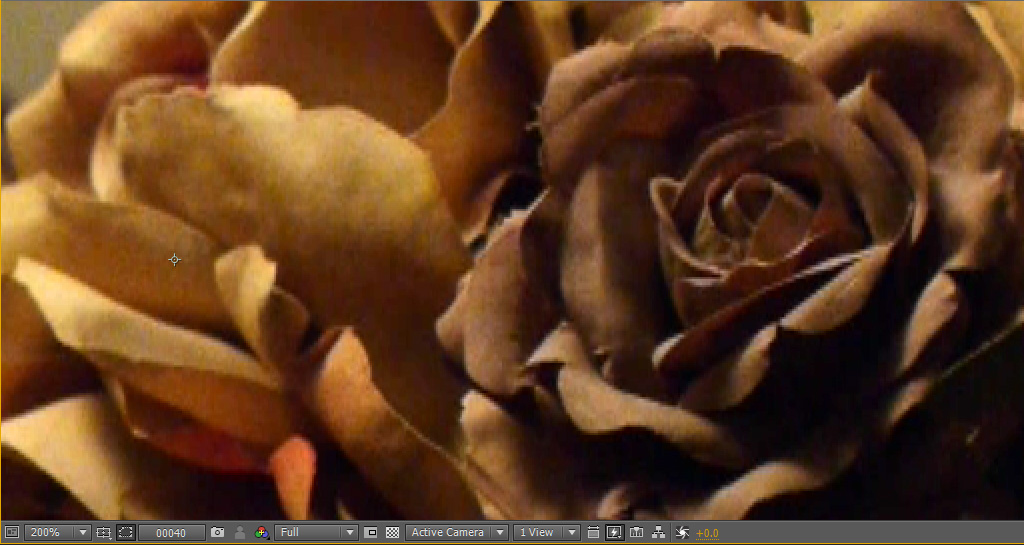
Flow Motion v2 1080p25 HBR mode, "Separate Fields OFF"
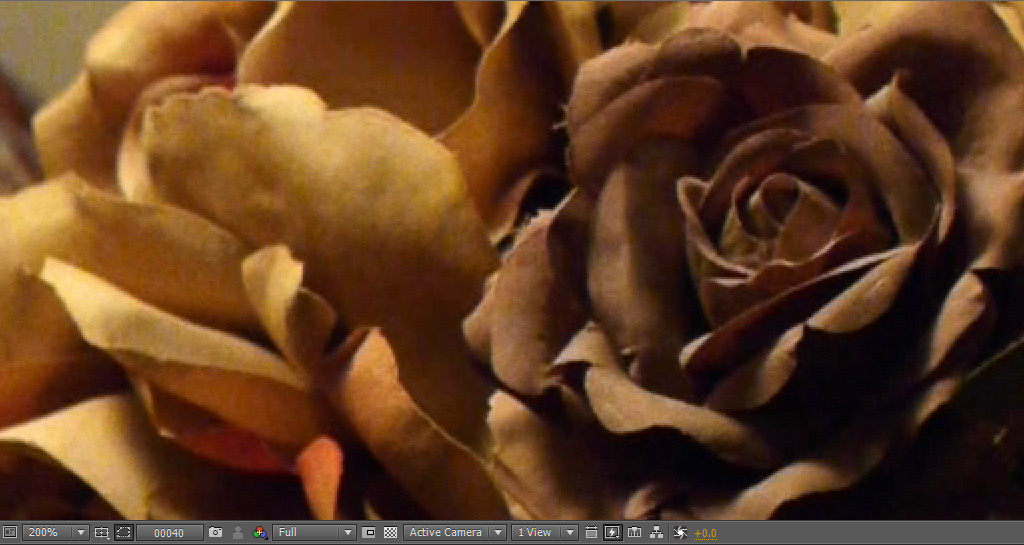

 Low Light FM2 HBR 2X field bug.JPG1024 x 545 - 185K
Low Light FM2 HBR 2X field bug.JPG1024 x 545 - 185K
 Low Light FM2 HBR 2X.JPG1024 x 545 - 207K
Low Light FM2 HBR 2X.JPG1024 x 545 - 207K -
I tested Flow Motion 2.01 first with the new Panny 25mm/f1.4 The only failures were with 720pSH from either Manual Movie or from Still setting pushing the red button. The subject was a large avocado tree in the wind panning slowly across it from under. One time the camera froze and I had to take the battery out to reset and no file was written in that case; other times failures gave a message and file was created up to failure spot. 720pH worked fine and pretty high quality. Using a manual lens, like Minolta 35mm/f1.8, works fine and I could not make it fail. Thus, it appears that an AF lens plus 720pSH with a subject that has lots of changing details may be too much for the camera and Flow Motion 2.01.
-
@cubrun I'm not an expert, but from everything I gathered here and there you can't just change the bitrate and expect everything to work fine. The AVCHD modes and parameters have some tight connections that will make it break if you operate large changes on single parameters without adjust almost everything else accordingly. What you are proposing is like driving a Ferrari at 60mph, it will run but doesn't make any sense to do it.
If you want extreme efficiency, you need to go with a long GOP setting like Sanity as it's performance/cost ratio is pretty much unrivalled. I find it's pretty good overall but some people will run away from long GOP settings like the plague.
-
@cubrun If you would like to have lower bitrates in 1080i and 720p modes, I'd recommend using the FH and H video modes. These modes are designed to limit their peak bitrates to less than 60Mbps, but will otherwise work exactly like the 100Mbps FSH and SH modes. You can also adjust the FH/H peak bitrate in PTool to your own preference, without disturbing the 100Mbps FSH/SH settings.
-
@LPowell I can't upload now Lee (Storms again) but maybe you can shed some light on this. In both 24p and 720p I get great, almost noise free video at night.
The other day when videoing under a shelter (no sides) I got a disturbing amount using a 2.8 lens and ISO 200. 720-60, bright light outside and shaded in, shutter 1/125, I don't remember the fstop, smooth -2. This was showing up mostly in the Green.
Any ideas?
Aside from that I swear this patch is magic in 720.
-
I haven't had time to test this patch yet, but I'd like to. The only problem I've seen in the pics so far is the macroblocking in the shadows. How far down does the bitrate drop in low detail/light situations? I think the GOP1 patches generally keep shadows better due to their near constant bitrates. Could we impose a lower limit in this patch to keep low detail areas from macroblocking?
-
@svart Flow Motion v2 is not bitrate-limited in low-light conditions - it will use as much bitrate as it needs to encode the video at its finest quantization quality. If you use Stream Parser to examine the DC QP level used in each frame, you'll see that FM2 maintains a uniform DC quantization of 5 at even the lowest levels of illumination. (Levels of quantization below 5 rapidly reach diminishing returns without perceptibly improving image quality.)
I'm not sure what you're referring to as "macroblocking", as the AVCHD encoder's inherently coarse sampling of dark shades can produce blotchy shadow effects regardless of how finely the macroblocks are quantized. Flow Motion v2 is designed to suppress high-detail chroma noise while enhancing luminance details. Since shadow areas usually have very low-contrast luminance details, they will turn out more contoured rather than noisy in FM2.
I lifted the shadow details in the Flow Motion v2 24H frame grab above, and graded it to reduce the saturation in the shadows while maintaining balanced color tones in the mids and highlights. (Yellow flowers are excellent test subjects for this purpose, as the gradients on their pedals are very sensitive to red/green color balance.) Bear in mind that the highlights in the video were intentionally recorded two-stops underexposed, as a test of low-light performance. This type of shadow grading requires very fine adjustments of individual RGB gain, gamma, and pedestal controls.
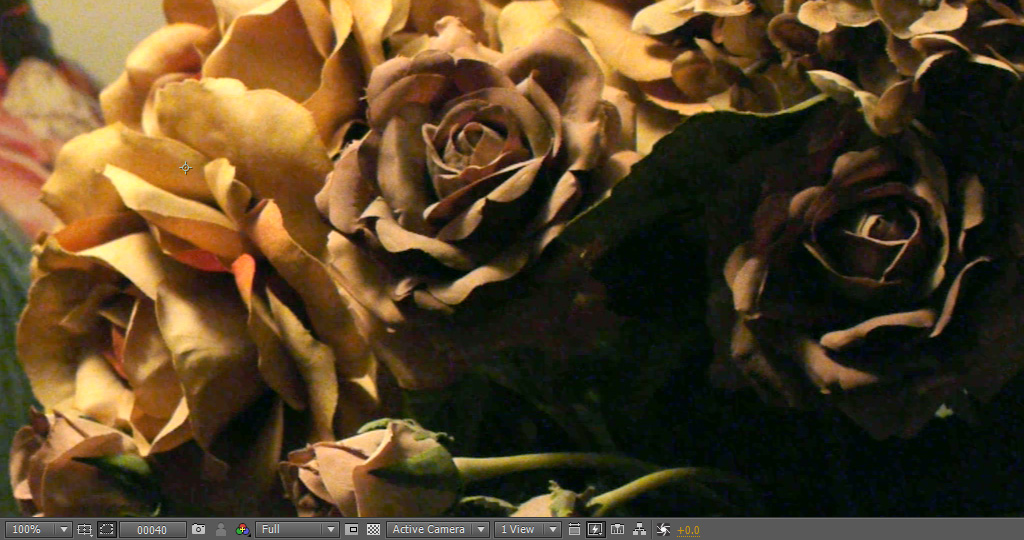

 Low Light FM2 Shadow Details.jpg1024 x 540 - 235K
Low Light FM2 Shadow Details.jpg1024 x 540 - 235K -
@ Lpowell, maybe I asked my question incorrectly. I'll try a simpler version of the question. Why do the dark areas in Flowmotion not look like Sedna in this post: http://www.personal-view.com/talks/discussion/comment/66160#Comment_66160
I understand I probably used the term "macroblocking" incorrectly and I understand the way the encoder works, what I do not understand is if Flowmotion is doing things equally or better than another patch, I.E., "a GOP1 patch needing 2xxmb/s to equal Flowmotion's capability", then why are the dark areas much more blocky? Wouldn't imposing a low side limit to bitrate, to keep the bitrate from going too low, and trick the encoder to break those areas up better?
-
@svart The quantization tables used in Sedna are designed for an Intra-only encoder. They employ overkill techniques to record as much high-detail image data as possible, regardless of how perceptible the finest details may be in practice. As a result, Sedna records a large amount of sensor noise, as well as genuine image details, and to do so at high quality requires very high bitrates. At conservative ISO and medium and high illumination levels, sensor noise is virtually imperceptible, but in areas of very low exposure, sensor noise becomes significant. As with dithering, a layer of noise can conceal underlying digital artifacts in a way that appears to improve shadow depth.
To my eyes, sensor noise looks much better in still frames than it does in low-fps video. I find random patterns of swirling noise to be distracting rather than enhancing. With Flow Motion v2, I've specifically prioritized continuous motion picture quality over static still-frame image quality. I want to see frames that integrate smoothly over time, and for that purpose, I don't want the encoder to preserve myriads of randomly varying statistical details.
This, by the way, is why I favor Flow Motion's 3-frame GOP over Intra patches. As animators have found, the most fluid motion picture effect is achieved when one or two tweened frames are inserted between each keyframe in a video sequence. In FM2's case, the pair of B-frames that follow each I-frame are actually reconstructed using a technique similar to animation tweening. Inter-frame macroblocks in a B-frame are made of an averaged combination of motion vectors taken from both preceding and following I-frames. These tweened motion vectors are then refined with a layer of residual details extracted from the original source frame. This methodology insures a high degree of inherent frame-to-frame continuity.
With an Intra patch, each frame is recorded as a separate individual keyframe, technically uncorrelated to adjacent frames. In this case, motion picture continuity is produced by recording each frame with enough static image quality to independently preserve all details common to each sequential frame. With extremely fine levels of quantization, random discrepancies between frames (which would enhance the detail of a still image) introduce sporadically varying details that I find distracting. In my view, optimal motion picture quality is produced by careful control of image detail rather than wholesale maximization of bitrate.
-
@Lpowell, thanks. I didn't mean to imply any competition or that either patch was better or worse. I think they are both great and are mostly after the same goals, just going about it differently. And this is why I asked my question, simply to understand the inner workings of your patch and why things look the way they do, because I didn't know. Maybe it's my eyes or monitors but those dark blocky areas really stand out to me.
-
A little off-topic, but per your question on rambo's exposures -- I'm finding that with FM (but really, all patches/setting with the GH2) it's always better to expose to the right, even into slight clipping, and then bring mids and lows down in post. The files are slightly larger than when "correctly" exposed, and (more importantly) more correctable.
Is there any consensus on this question -- at least for uncontrolled lighting conditions?
Howdy, Stranger!
It looks like you're new here. If you want to get involved, click one of these buttons!
Categories
- Topics List24,043
- Blog5,725
- General and News1,377
- Hacks and Patches1,153
- ↳ Top Settings33
- ↳ Beginners256
- ↳ Archives402
- ↳ Hacks News and Development56
- Cameras2,384
- ↳ Panasonic995
- ↳ Canon118
- ↳ Sony156
- ↳ Nikon96
- ↳ Pentax and Samsung70
- ↳ Olympus and Fujifilm102
- ↳ Compacts and Camcorders300
- ↳ Smartphones for video97
- ↳ Pro Video Cameras191
- ↳ BlackMagic and other raw cameras132
- Skill1,960
- ↳ Business and distribution66
- ↳ Preparation, scripts and legal38
- ↳ Art149
- ↳ Import, Convert, Exporting291
- ↳ Editors191
- ↳ Effects and stunts115
- ↳ Color grading197
- ↳ Sound and Music280
- ↳ Lighting96
- ↳ Software and storage tips266
- Gear5,420
- ↳ Filters, Adapters, Matte boxes344
- ↳ Lenses1,582
- ↳ Follow focus and gears93
- ↳ Sound499
- ↳ Lighting gear314
- ↳ Camera movement230
- ↳ Gimbals and copters302
- ↳ Rigs and related stuff273
- ↳ Power solutions83
- ↳ Monitors and viewfinders340
- ↳ Tripods and fluid heads139
- ↳ Storage286
- ↳ Computers and studio gear560
- ↳ VR and 3D248
- Showcase1,859
- Marketplace2,834
- Offtopic1,331










